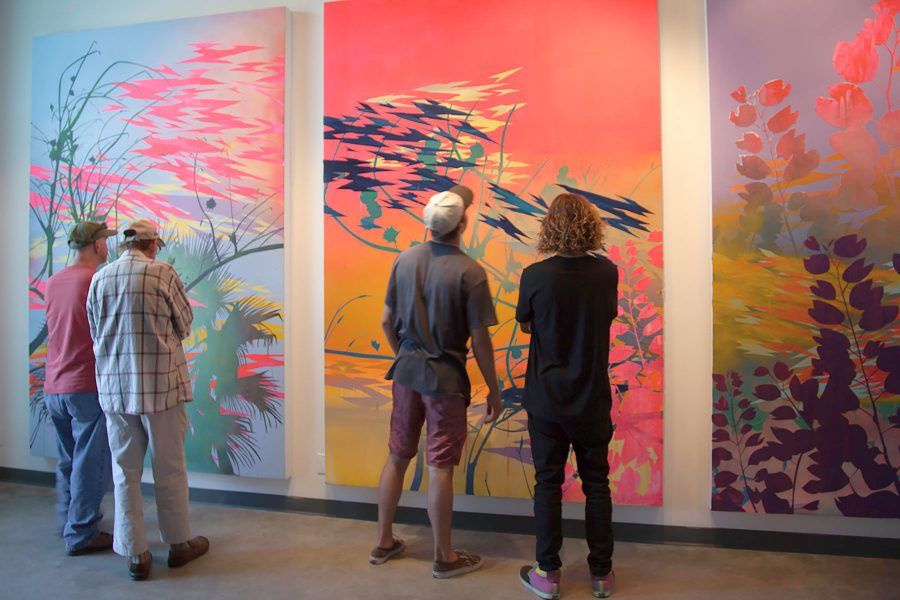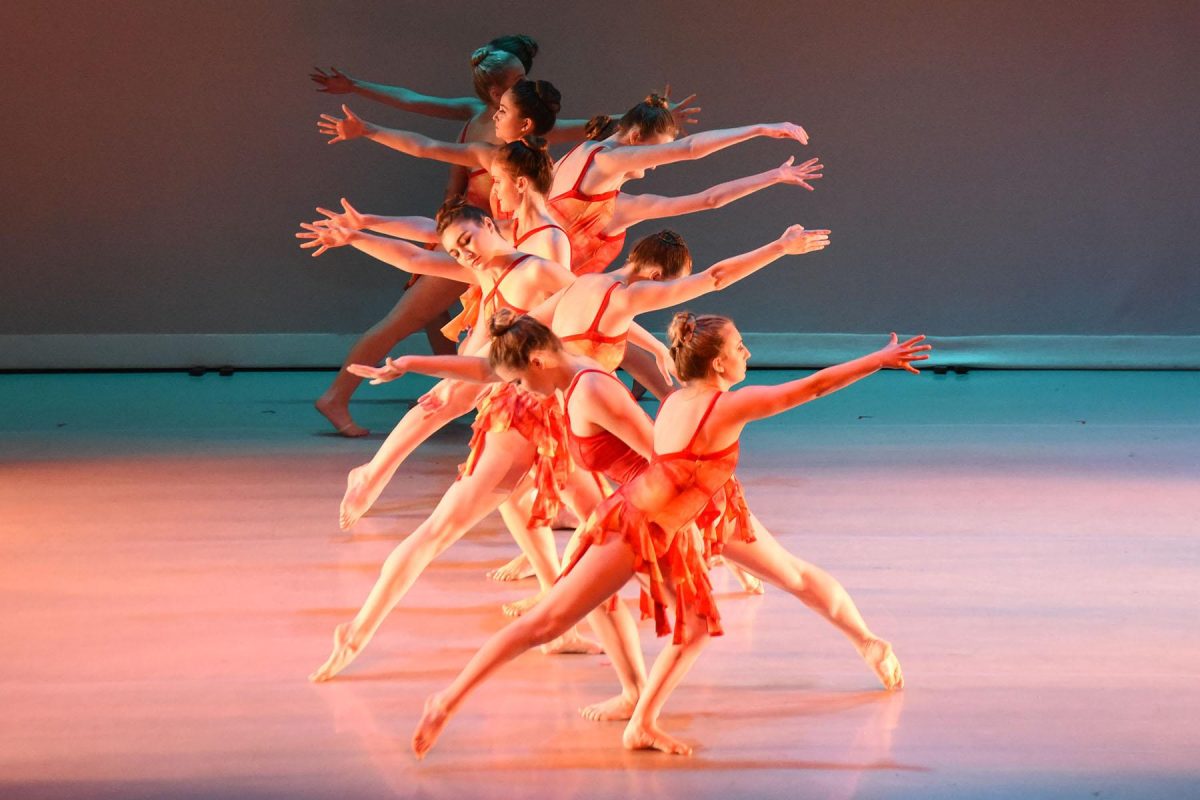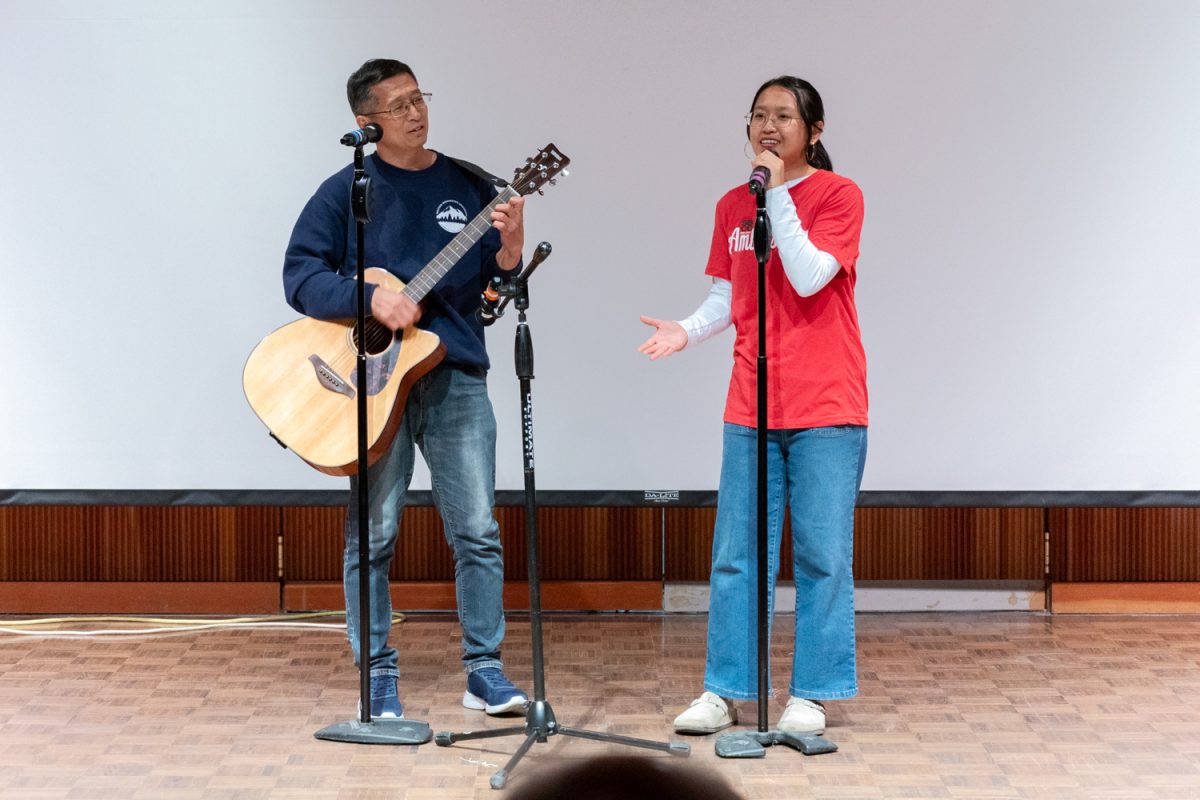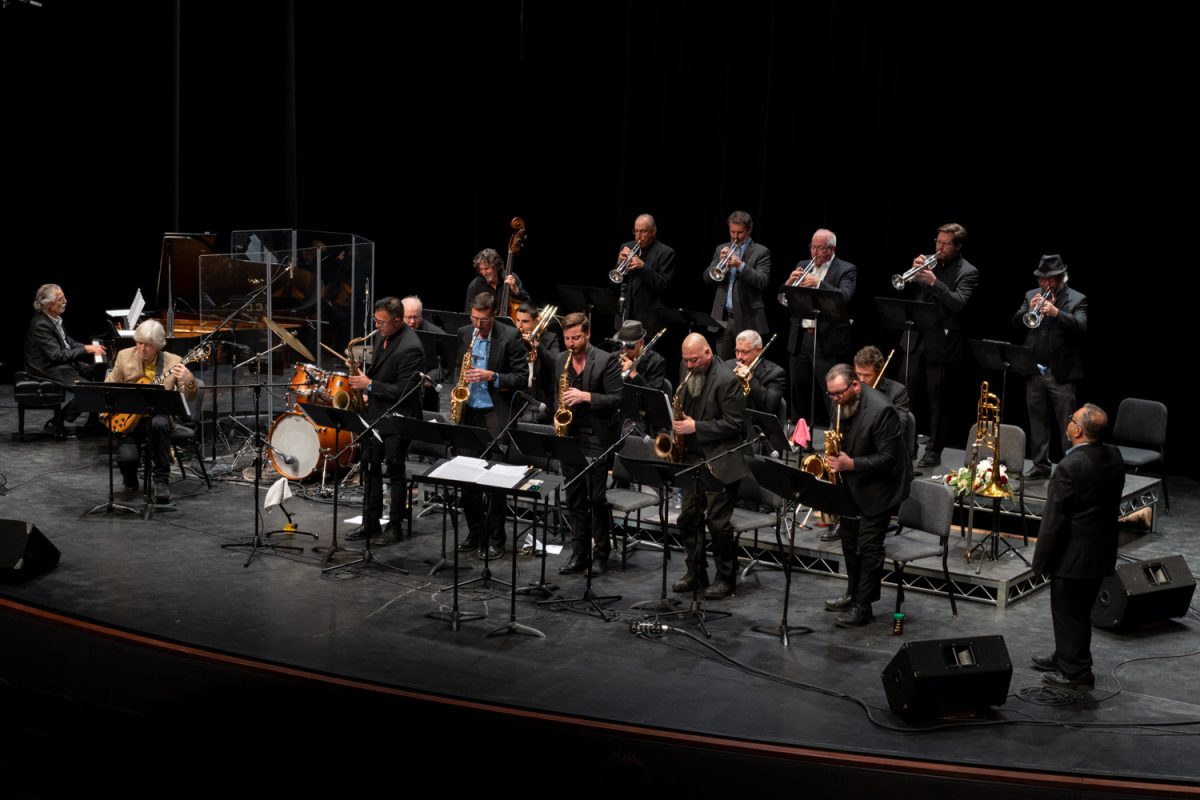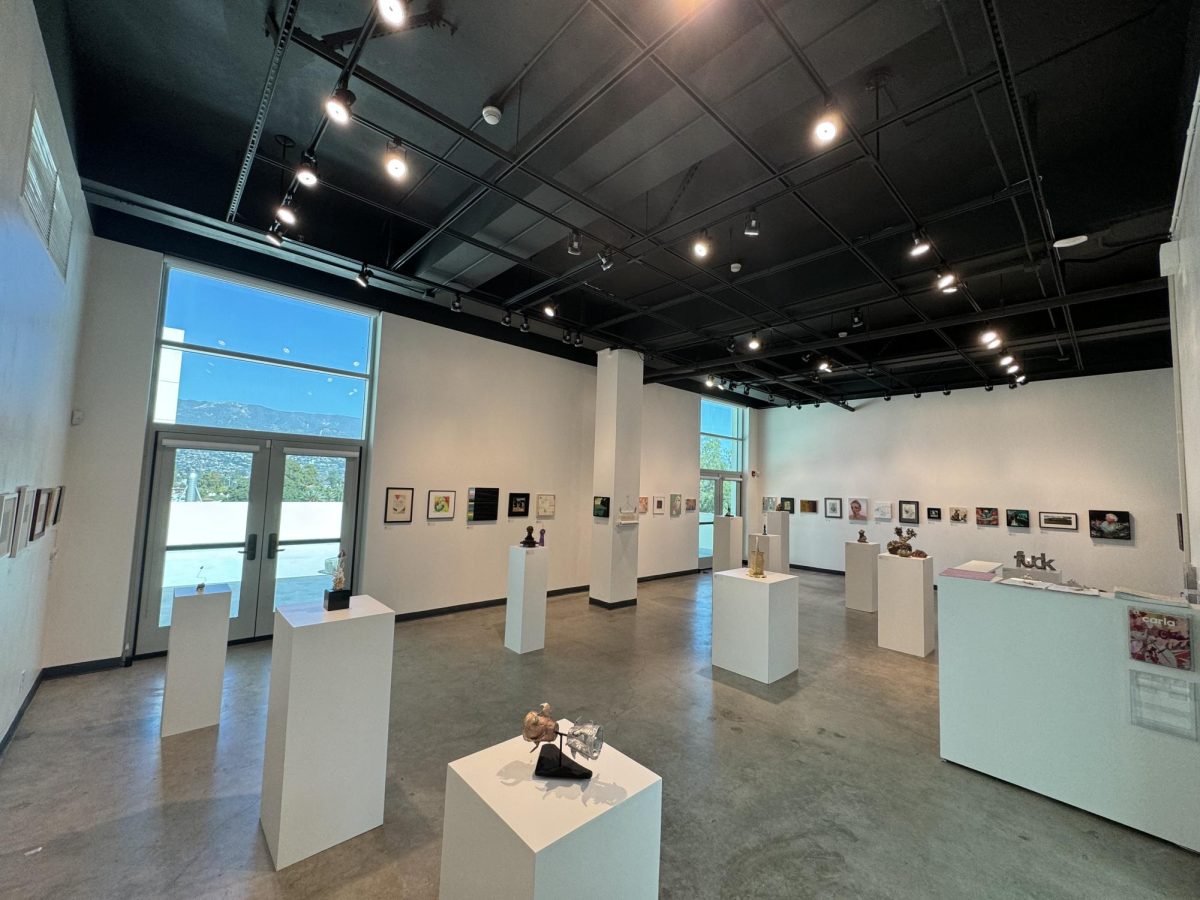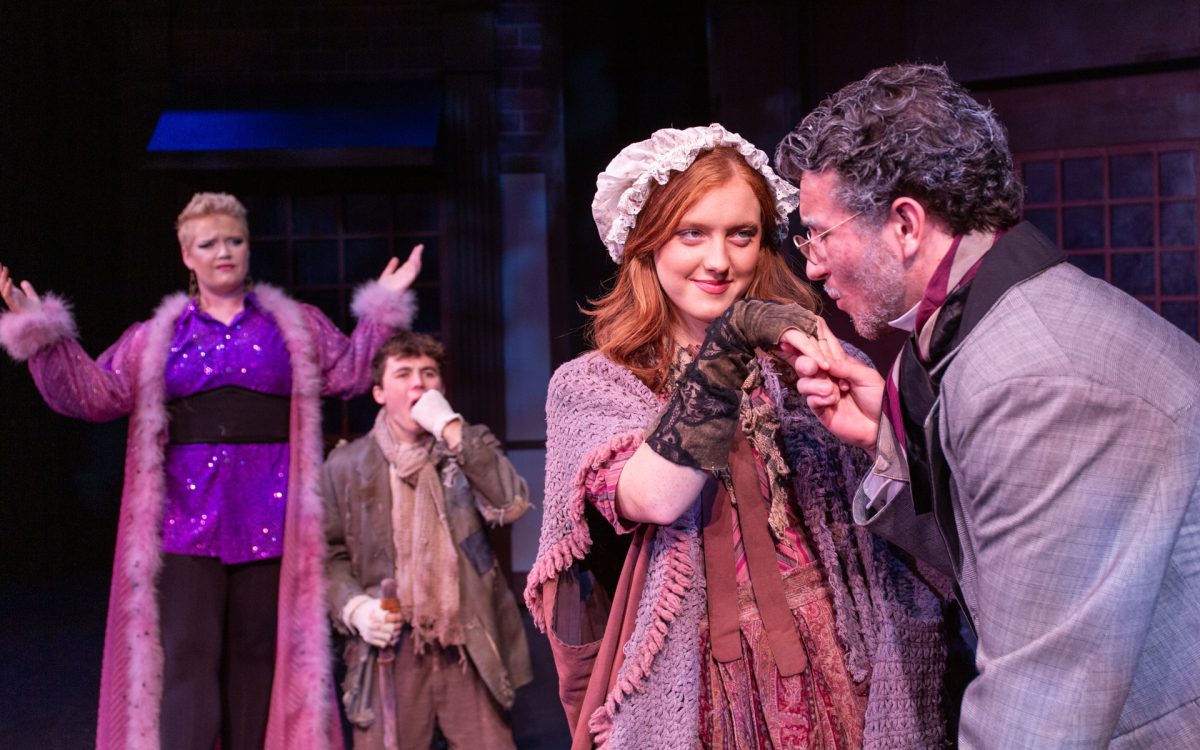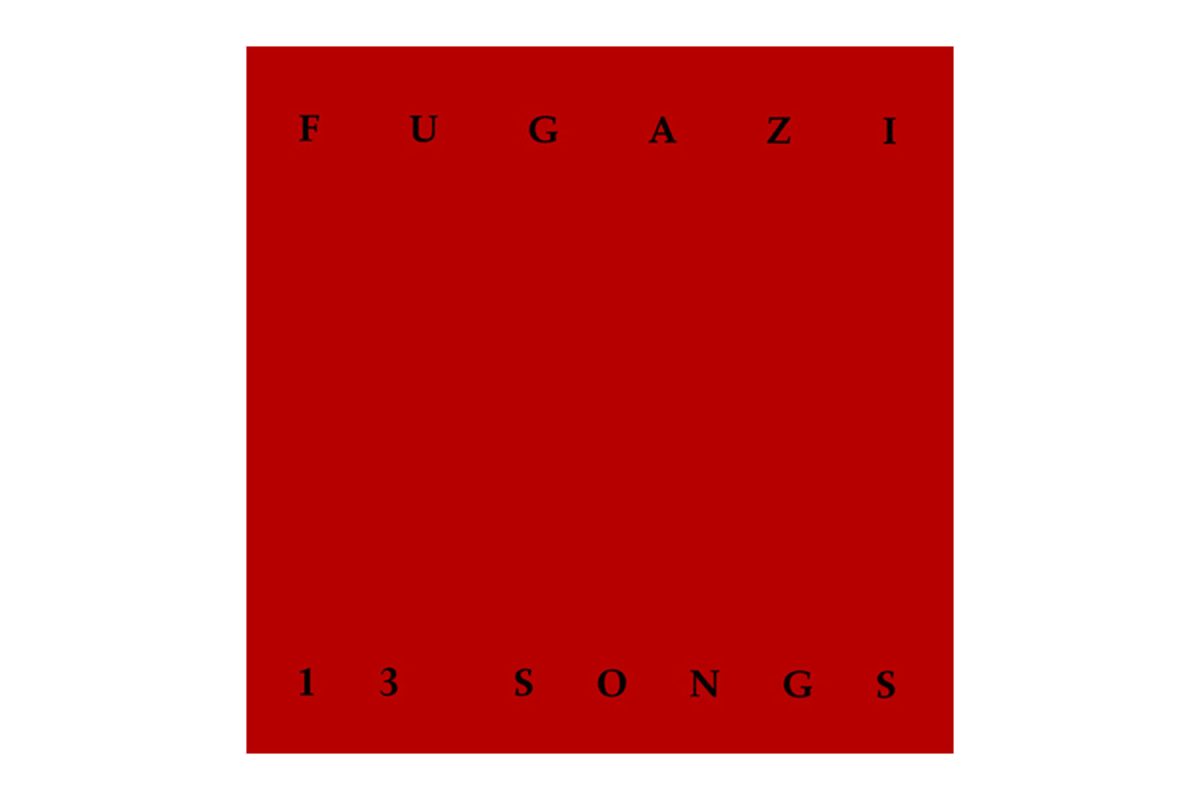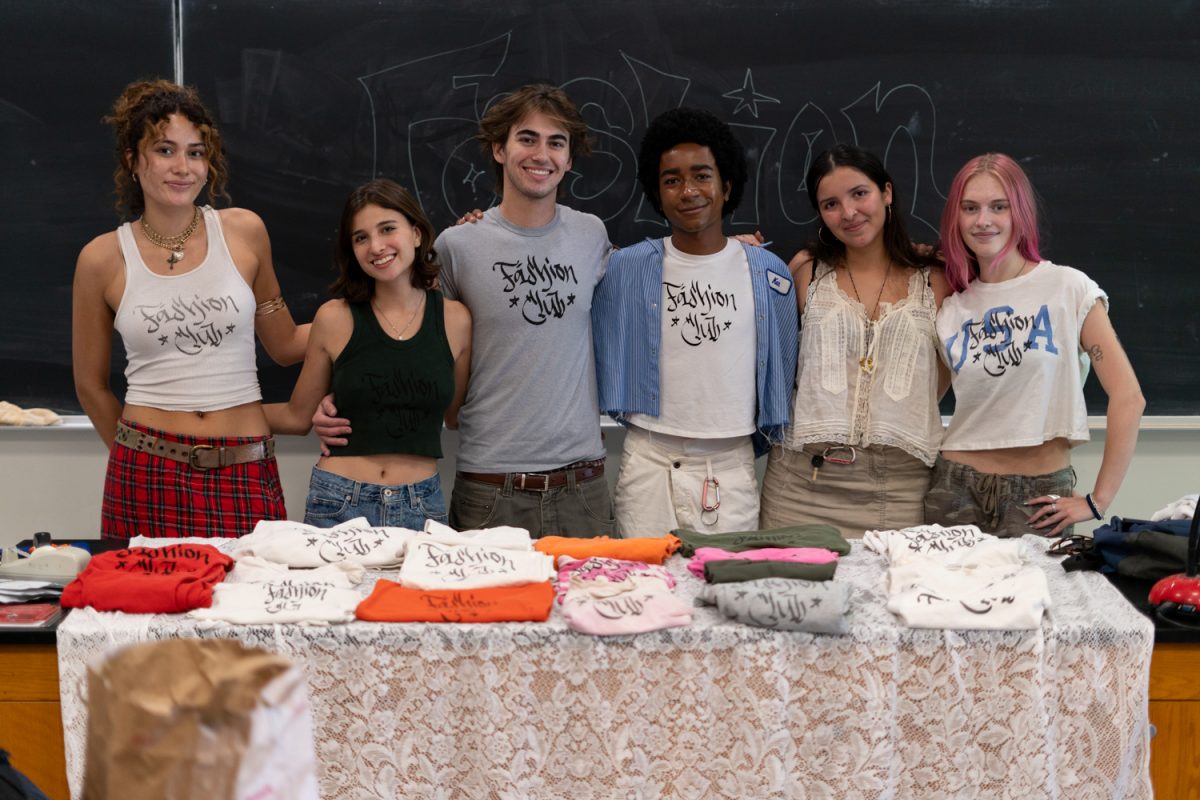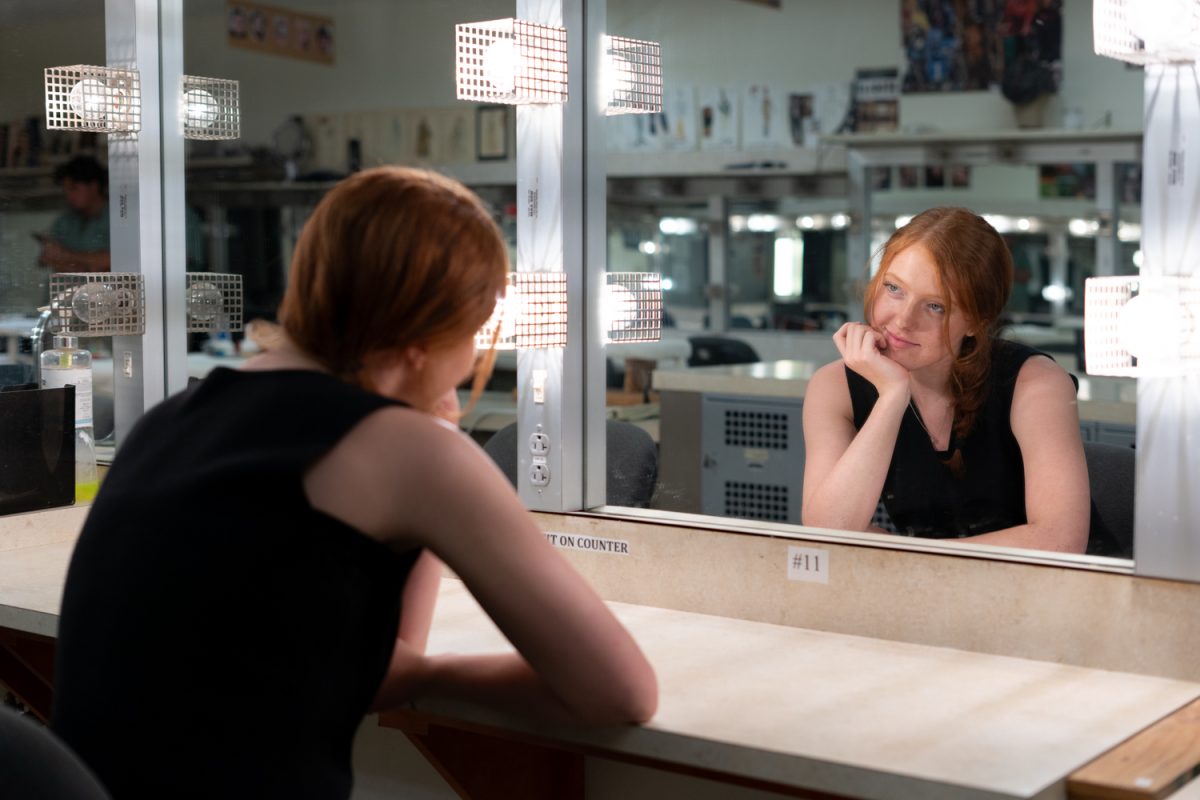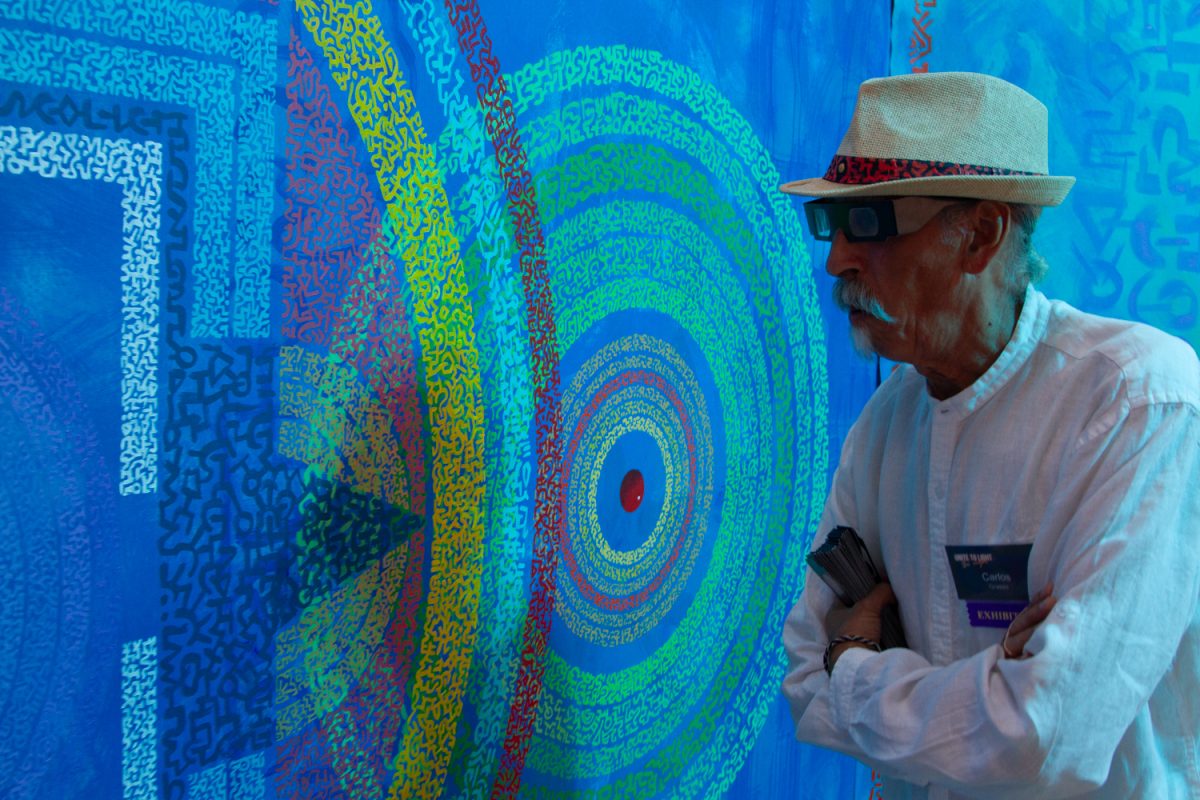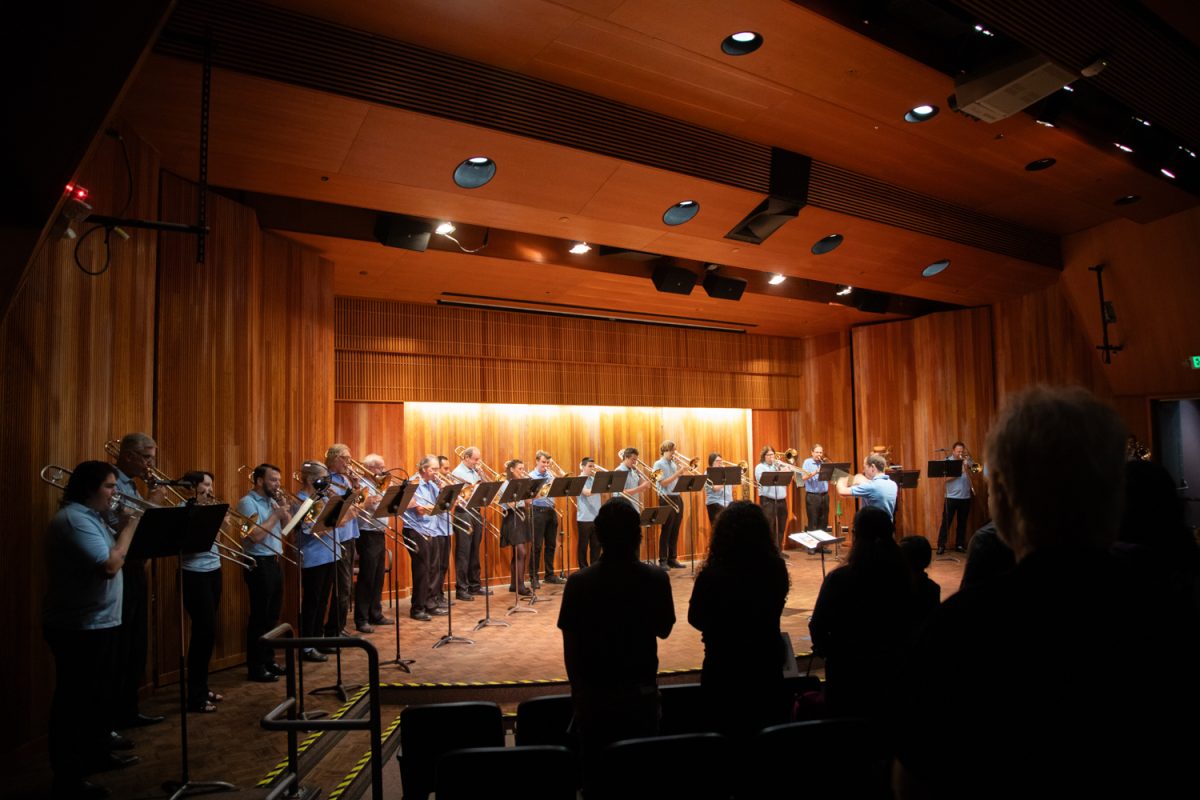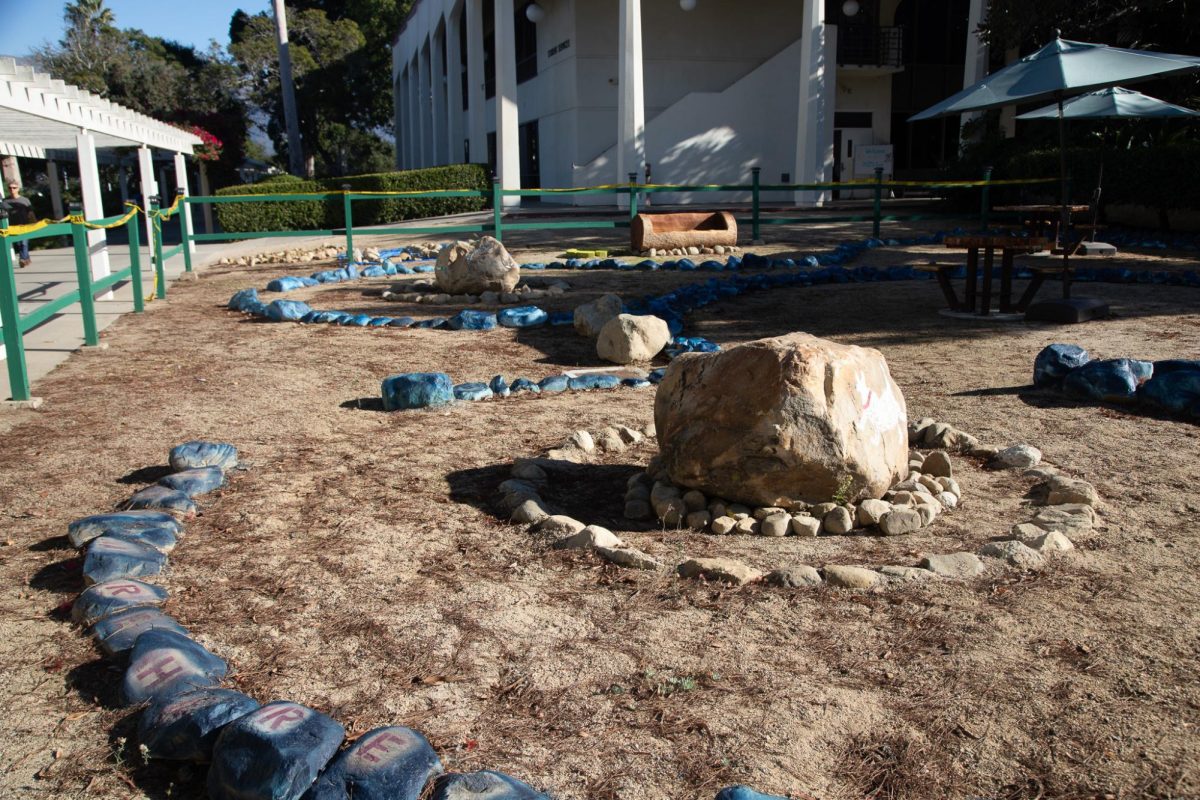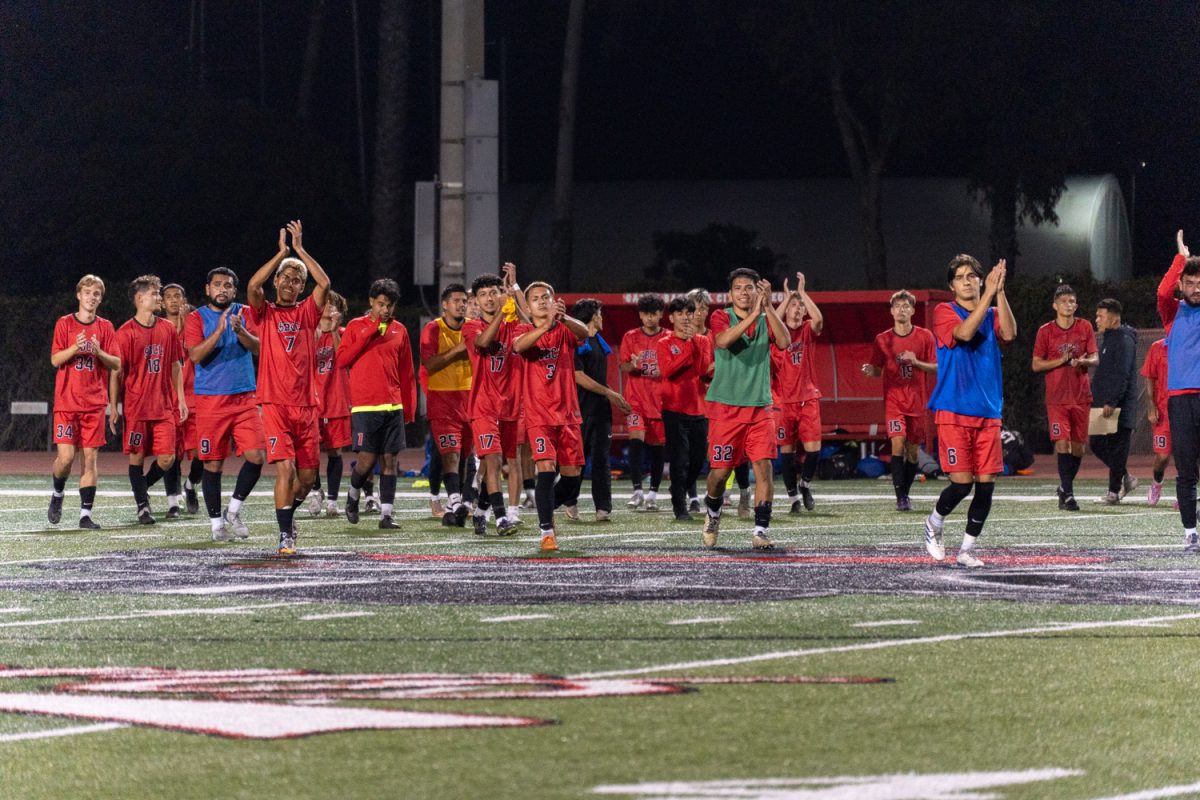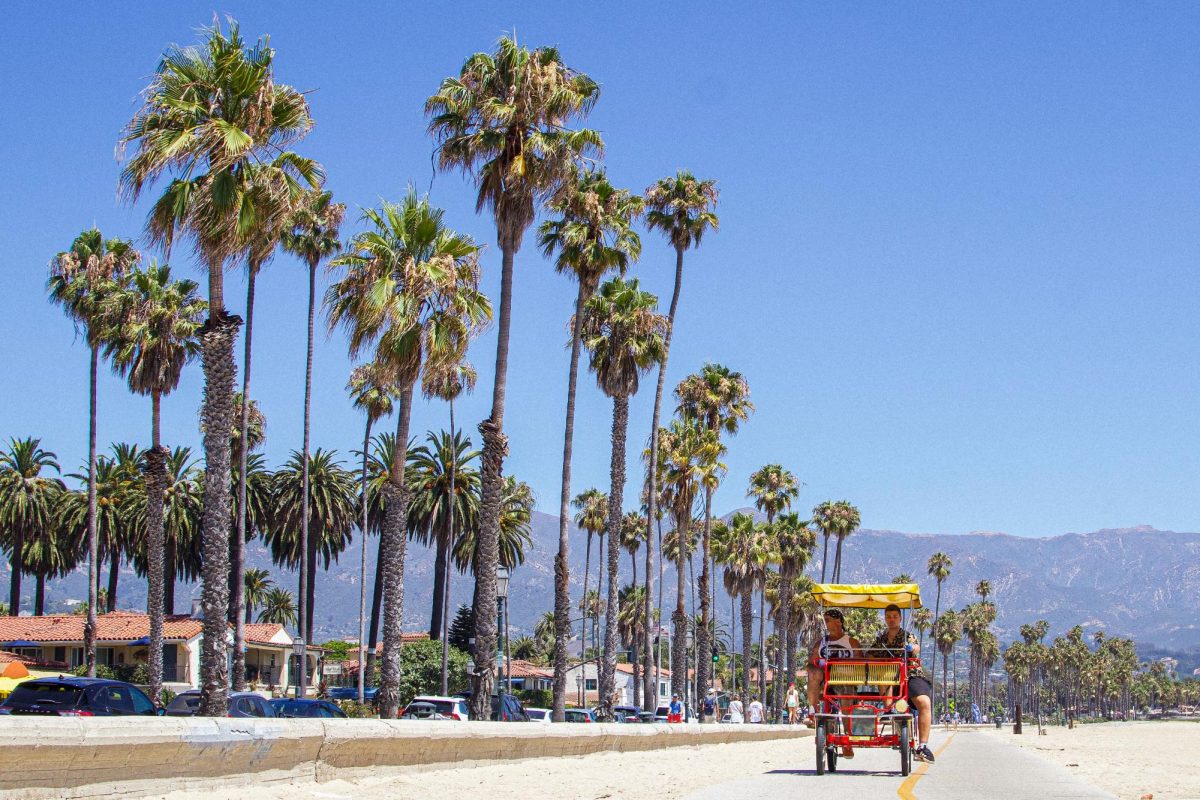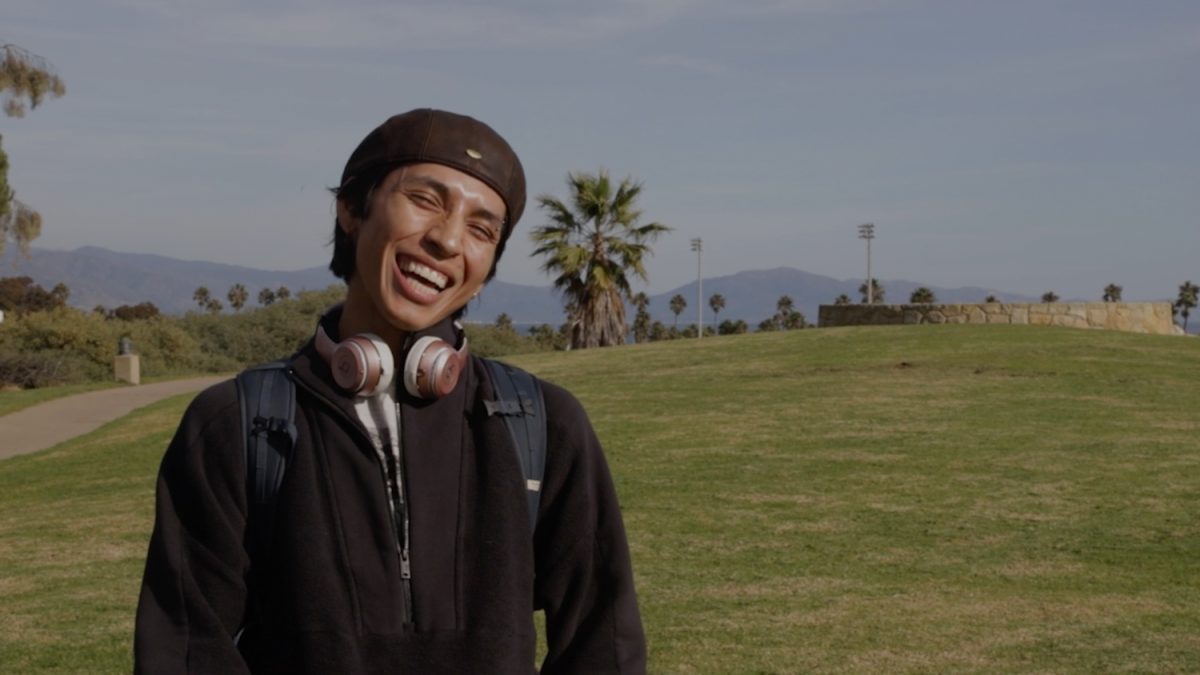Who wants to be at school at 5 p.m. on a Friday, standing in a line that stretches halfway down the second floor of the Humanities building?
Up until the opening of Devon Tsuno’s semester long art exhibit in the Atkinson Gallery, “Los Angeles River: Urban Reclamation,” an Andy Warhol exhibition would not have persuaded me—unless of course, I was being graded or paid. Tsuno’s exhibit proved that being at school on a Friday evening can be enjoyable. Plus, California’s dry and polluted land never looked so sublime.
The exhibit premiered at 5 p.m. Friday, Sept. 16, in the Humanities Building Room 202. It will be shown for the entire semester, until Dec. 2. The gallery’s hours have not been announced yet, but it open starting Monday with free admission.
Tsuno is a Los Angeles native. He uses acrylic and spray paint to create a lurid perception of the Los Angeles watershed. He spent his entire life observing its decline, using abstract art to adorn the environmental disaster, and raise drought awareness.
All but one of Tsuno’s pieces are a combustion of colors and all chaotic. One of my favorites is painted on canvas and reaches 9 feet high and 6 feet wide—a naked tree with green branches, scratching at a pale blue sky, with electric pink rain shaped like lightning ripping through a fallen palm tree.
My second favorite piece also stood 9 feet high, with the colors of a Fiji sunset: a yellow swamp floor and orange horizon, shadowed by a hot pink sky. The same cadaverous tree clawed its way through the fluorescent orgy. These two pieces hang side by side on the south end of the gallery, where most of the people migrated. But after the appetizer buffet table was practically licked clean by the hungry crowd, of course.
The entire north wall of the gallery is covered with Tsuno’s black and white rendition of the Los Angeles River, lined with five monotype screenprints, all 30 by 22 inches, strewn across the xeroxed wall at eye level. Each piece sits behind a pane of glass, bordered with a bone white frame made from maple wood. The colors of these pieces are twisted like a dismembered rainbow, creating a static that vibrates the entire gallery.
Behind the Atkinson’s only visible structural column, also wrapped with black and white xerox, are two lone pieces that should not be overlooked. These pieces are also 30 by 22 inches, but differ from the others. The best of the two showed purple leaves, lying on a kaleidoscopic background, showered with a tanglement of yellow that looks like a melted sun.
Despite the similarities in a lot of Tsuno’s pieces, monotony is not a factor. There is a reason City College has agreed to run the exhibit until Dec. 2 in the Atkinson Gallery—Devon Tsuno has taken something absolutely terrible, and turned it into something postively beautiful.


